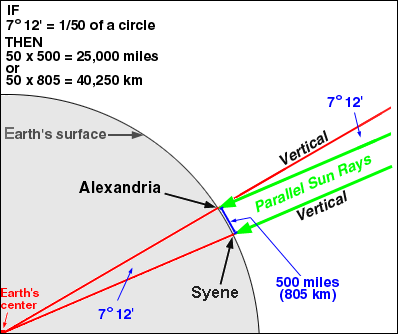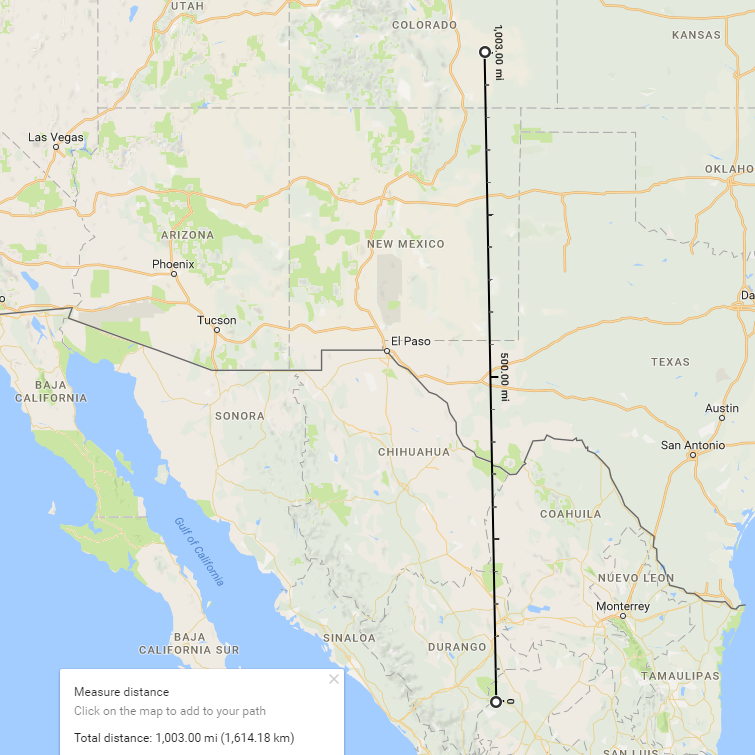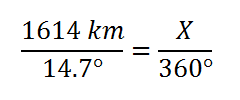It came up in class recently that the Ancient Greeks knew the Earth was round and that in fact, Eratosthenes even measured the Earth’s radius. We can revisit his method using some fun web-based tools.
REVIEW OF THE METHOD OF ERATOSTHENES
- If you happen to be standing on the Tropic of Cancer at noon on the day of the summer solstice, you will notice that you have no shadow. The sun is directly over your head.
- On that same day, if you are some distance north (or south) of the Tropic of Cancer, you WILL have a shadow. You can use your height and the length of your shadow to calculate the angle of the sun overhead. That angle is also the central angle from the center of the earth to your current location.
- There are 360 degrees in a full circle. And the corresponding distance is the full circumference of the Earth.
You can find tons of info about this on the web. For example, here is a helpful image from Jochen Albrecht’s website at Hunter College:
I thought it might be fun to see if we can reproduce this result using some helpful sites on the web.
This website lets you choose any location on the planet, choose the date you want to see, and then watch how an object’s shadow changes throughout the day. So you can have your students look for a place and time when the object’s shadow disappears! (You can provide more or less guidance, depending on how much time you want to spend on this activity.)
Here is a screenshot showing the shadow length of a 1 m tall object in Sombrerete, Mexico on June 21st:
You can see that the shadow is gone! Depending on how much you have revealed to your students, it might be helpful to note the latitude (in the window on the lower left).
The next step is to choose another location north or south of our first location so that we can check out the shadow there. I went north to the little town of Olney Springs in Colorado. I chose this pretty much at random but nearly due north from Sombrerete.
You can see that on the same time and date as before, the shadow of the 1-m tall object is now .26 meters. You can use the inverse tangent to get the angle of the sun. Or, if you feel lazy, you can read the angle right from the website — but that is the complement of the angle we need. Either way, you get 14.7 degrees.
Now we just need to know how far it is from Sombrete to Olney Springs. Google Maps to the rescue:
That’s 1,614 km, nearly due north. And it corresponds to a central angle of 14.7 degrees. We are almost home free:
This solves to give as the circumference of the Earth: 39,526 km.
From there, we get a radius of 6,290 km — a result that is less than 2% away from the “official” value.
Of course, it’s good to remind students that Eratosthenes worked this out more than two millennia ago!





